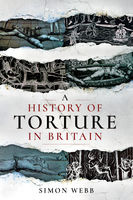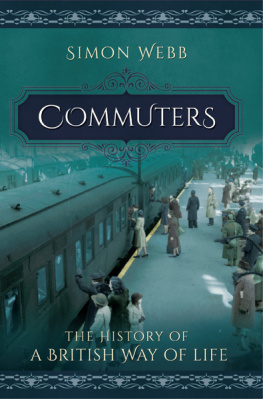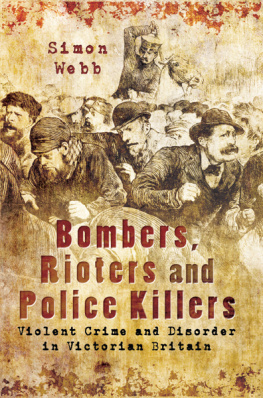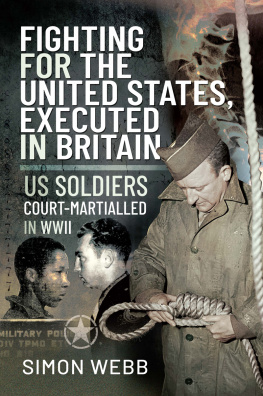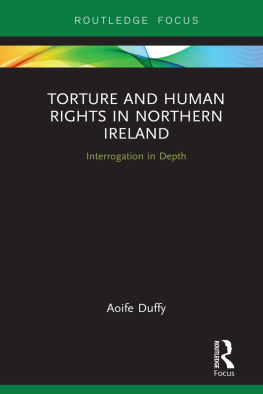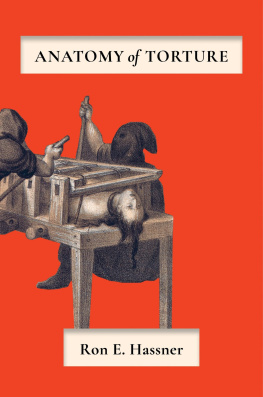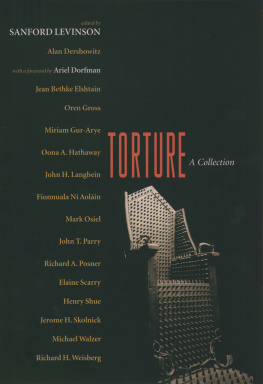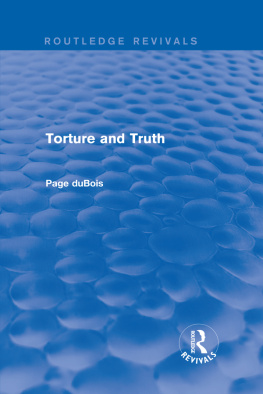
A History of Torture in Britain
A History of Torture in Britain
Simon Webb

First published in Great Britain in 2018 by
Pen & Sword History
An imprint of
Pen & Sword Books Ltd
Yorkshire - Philadelphia
Copyright Simon Webb, 2018
Hardback ISBN 978 1 52671 929 4
Paperback ISBN 978 1 52675 148 5
eISBN 978 1 52671 931 7
Mobi ISBN 978 1 52671 930 0
The right of Simon Webb to be identified as Author of this work has been asserted by him in accordance with the Copyright, Designs and Patents Act 1988.
All rights reserved. No part of this book may be reproduced or transmitted in any form or by any means, electronic or mechanical including photocopying, recording or by any information storage and retrieval system, without permission from the Publisher in writing.
Pen & Sword Books Ltd incorporates the Imprints of Pen & Sword Books Archaeology, Atlas, Aviation, Battleground, Discovery, Family History, History, Maritime, Military, Naval, Politics, Railways, Select, Transport, True Crime, Fiction, Frontline Books, Leo Cooper, Praetorian Press, Seaforth Publishing, Wharncliffe and White Owl.
For a complete list of Pen & Sword titles please contact
PEN & SWORD BOOKS LIMITED
47 Church Street, Barnsley, South Yorkshire, S70 2AS, England
E-mail:
Website: www.pen-and-sword.co.uk
or
PEN AND SWORD BOOKS
1950 Lawrence Rd, Havertown, PA 19083, USA
E-mail:
Website: www.penandswordbooks.com
Contents
List of Illustrations
Introduction
Chapter 1 The Use of Torture for Interrogation in Medieval and Tudor England
Chapter 2 Torture in Scotland
Chapter 3 The Decline of Torture in Seventeenth-Century England
Chapter 4 The Early Colonial Period
Chapter 5 Tortured to Death: Deliberately Prolonged Suffering in Executions
Chapter 6 Eighteenth and Nineteenth-Century Britain
Chapter 7 Torture in the British Army and Navy
Chapter 8 Torture in the British Empire
Chapter 9 The Twentieth Century
Chapter 10 The Five Techniques
Endword
Bibliography
List of Illustrations
1. The public mutilation and branding with red-hot irons of a blasphemer during the rule of Oliver Cromwell.
2. Libelling the monarch in Elizabethan England could result in having the right hand chopped off.
3. A contemporary drawing of the origin of torture in Britain; a reluctant suspect is handed a red-hot iron bar, which he must carry for nine paces.
4. Calling upon God to decide innocence or guilt; the ordeal by cold water.
5. The subject of 1,000 cartoons.
6. Being married to the Duke of Exeters daughter; the rack in action in the Tower of London.
7. Skeffingtons Gyves, otherwise known as the Scavengers Daughter; the opposite procedure to the rack, it squashed, rather than stretched, the victim.
8. Breaking on the wheel was a brutal death. It was occasionally inflicted in Scotland, but never in England.
9. Although never popular in England, thumbscrews were used in Scotland under a variety of names, such pilliwinks.
10. The peine forte et dure in action; a torture which was used in Britain well into the eighteenth century on those who refused to enter a plea when brought to trial.
11. Matthew Hopkins, the self-styled Witchfinder General; a man who was ready and willing to use torture in pursuit of the Devils agents.
12. Slaves in British colonies were treated like cattle, being branded and whipped at the will of their owners.
13. Gibbetting alive (hanging a man in chains to die of exposure and thirst), was used in both England and the Caribbean.
14. Luisa Calderon was a 15 year-old girl tortured at the orders of the British general, Thomas Picton.
15. Another death by torture; Sir John Oldcastle being roasted over a slow fire. Burning to death could be prolonged in this way for hours.
16. An early example of a man being disembowelled as part of the punishment known as hanging drawing and quartering.
17. The pillory sometimes amounted to being stoned to death; a slow and painful end.
18. An unpleasant and hazardous way of torturing women; deaths were not unknown in the ducking stool.
19. A prisoner after being flogged in the 1860s; this type of torture lingered on in England for another century.
20. Medieval waterboarding. Precisely the same torture was being used by the British Army in Northern Ireland as late as the 1970s.
Introduction
Torture is the practice of inflicting severe pain on people, either to punish them or persuade them to say or do something. Perhaps the most succinct and accurate definition of torture is still that given by Dr Johnson in his famous dictionary, which was first published in 1755. In it, he described torture as being, pain by which guilt is punished or confession extorted. Torture may be conducted as either a private enterprise or judicially, on behalf of the state. In this book, we shall be looking at the official use of torture, sanctioned by the Crown, courts, police, army or other legal authorities in Britain and its possessions overseas. Before going any further, it might be as well to deal briefly with a widespread myth to the effect that torture has been unlawful in Britain since 1215, when it was expressly forbidden by Magna Carta. So common is this misapprehension that the matter will be dealt with in some detail in Chapter 2. For now, it is enough to say that the idea of torture being extra-judicial or outside the law of England, was not devised until the early seventeenth century, over 400 years after the drafting of Magna Carta.
Perhaps the best way to expose the mistaken notion that torture has only been practised in Britain to a limited extent and in a hole-and-corner way, in dark dungeons out of the public view, is to give some contemporary accounts of its use. The following passage, taken from The London Journal of 12 June 1731, just as the Enlightenment was gaining pace in Europe, tells of the punishment inflicted on the aptly named Japhet Crook.
Posing as Sir Peter Stringer, the elderly Crook forged documents suggesting that he owned a tract of land in Essex. He then raised a mortgage on the land. Japhet Crook was 70 years of age at this time and had carried out similar frauds for years without being caught. This time though, his luck ran out. He was arrested and brought to trial. The sentence was one of life imprisonment, but before that he was ordered to undergo public punishment. On 9 June 1731, Crook was brought from prison and set in the pillory at Londons Charing Cross. The London Journal relates what happened next:
He stood an hour thereon, after which a chair was set upon the pillory and he being put therein, the hangman with a sort of pruning knife, cut off both his ears and immediately a surgeon clapt a styptic thereon. The executioner, with a pair of scissors, cut the left nostril until it was near quite through and afterwards cut the right nostril at once. He bore all this with great patience, but when in pursuance of his sentence, the right nostril was seared with a red-hot iron, he was in such violent pain that his left nostril was let alone.
Ears cut off, nostrils slit with scissors, red-hot irons; it is difficult to know what word one could possibly apply to such horrors, other than torture. Using red-hot irons on peoples faces was a not uncommon punishment in Britain for centuries, along with mutilations, up to and including the amputation of hands and feet. One or two more examples might underline the point. In December 1655, during the time that Oliver Cromwell ruled the country, a Quaker called James Naylor fell foul of the authorities and was convicted of blasphemy. An eyewitness describes what was done to this man, whose only offence was to preach the Gospel, after he had been set in the pillory at the Royal Exchange in London;
Next page
